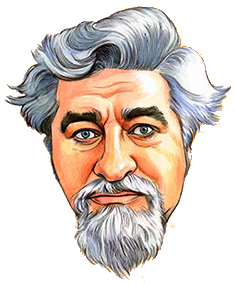- EldarProxy's Blog
- Log in to post comments
Some dates:
3000 BC Evidence of first wine industry along the banks of Nile
1492 Columbus travels to the West indies and sees Native Americans smoking tobacco
1600 Marijuana cultivation begins in U.S. with the Jamestown settlers, who used its strong fibers to make ropes and clothing
1919 National Prohibition Act
1935 A stockbroker and a surgeon (recovered and current alcoholoics) started Alcoholics Anonymous
1982 U.S. cocaine use peaks, with 10.4 million users
1985 Crack cocaine first appears in large cities like Miami and New York
Few facts from the article:
Dopamine biochemistry
"We feel good when neurons in the reward pathway release a neurotransmitter called dopamine into the nucleus accumbens and other brain areas." Neurons in the rewards pathway communicate with dopamin in synapse: dopamine is released from axon and hits dopamine receptors on another neuron dendrite. At the same time, it's captured back by the axon, so that signal is not permanent. Another neuron may have synapse down the dendrite where it can release GABA (gamma-aminobutyric acid), another neurotransmitter which inhibits stimulation by the dopamine.
Drugs mess up with this mechanism by forcing the release of more dopamine (e.g. meth), blocking capturing dopamine back (cocaine), or blocking the release of GABA (heroin, mortphine).
Quotes
"In the brain of addicts, there is reduced activity in the prefrontal cortex, where rational thought can override impulsive behavior"
"What has to happen for that cue [for falling to the addiction again] to extinguish is not for the amygdala [unconscious part in reward pathway] to become weaker but for the frontal cortex [conscious mind] to become stronger."
Interesting facts:
Frontal cortex where cognitive functions happen can override addiction, but in addicts they seems to be significantly less active. Some drugs may inhibit its activity, but low cognitive functions make addiction and relapses significantly more likely. "To his surprise, Paulus found that 80% to 90% of the time, he could accurately predict who would relapse within a year simply by examining the scans."
Addiction in U.S.
Alcohol: 18.7 million people, 7.7% of population; 12,000 more try it every day; 2,000 Alcoholics Anonymous
Drugs: 3.6 million are dependent; 8,000 try them every day for the first time; 700,000 in treatment; marijuana, cocaine and pain releivers are leading.
Tobacco: 71.5 million people; 23.4% or men and 18.5% women smoke sigarettes; 44.3% of young adults 18 to 25 years smoke, highest rank in all age groups.
Caffeine: 80% to 90% of Americans. 40% to 70% of them experience withdrawal if trying to quit.
Food: 4 million people.
Gambling: 2 million people.
Shopping: 1 in 20 Americans.
Язык
